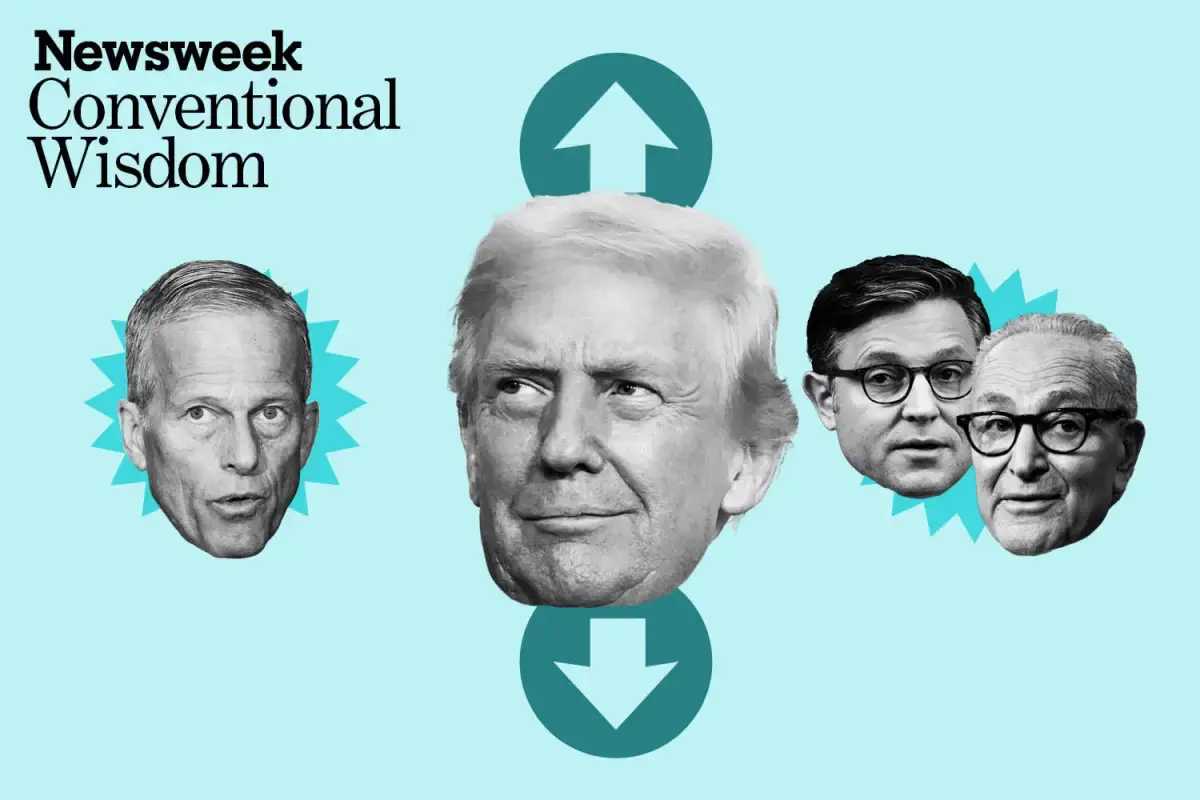Copyright Newsweek

In this edition, CW looks at the Senate deal to end the 40-day government shutdown. Donald Trump ⬅➡ Blamed the shutdown for the Republicans’ election drubbing last week, getting the government reopened without blowing up the filibuster. But now any hiccups on SNAP benefits, sticker shock at ACA premiums, or air traffic chaos are squarely his fault—no more Dems to blame. Sen. John Thune ⬆ After 14 consecutive failed votes, the Senate Majority Leader finally got enough Democratic votes for a breakthrough on Sunday night. When Senator John Cornyn walked in at 10:50 p.m. to cast the 60th vote, the chamber broke into applause. Turns out not blinking works. Sen. Chuck Schumer ⬇ When he sparked party outrage after caving in March’s budget showdown, he vowed to fight this time. Forty days later, Representative Ro Khanna called for him to be replaced as Minority Leader within hours of the deal. Two of the eight Democratic Senators who voted yes had already announced their retirement. Schumer voted no, but his odds of joining them when his term is up in 2028 went up. Rep. Mike Johnson ⬇ Kept the House out of session for 52 days—only 20 working days since July 3; nice work if you can get it—which served as a convenient excuse to avoid swearing in newly elected Representative Adelita Grijalva, the 218th signature needed to force a vote on the Epstein files. The end of vacation is the hardest. Hertz ⬆ With a wave of canceled flights sparked by the shutdown, one-way car rentals spiked 20 percent compared to last year as desperate travelers scrambled for alternatives. When the government manufactures a travel crisis, somebody's going to make money off the chaos. Air Traffic Controllers ⬇ Worked mandatory six-day weeks without pay for 40 days while Trump threatened those who called out sick with "negative marks" and told them to quit "with NO payment or severance." FAA Administrator Bedford reported 20 to 40 percent stopped showing up. Originally a staple of Newsweek's print edition, Conventional Wisdom used arrows to track whose stock was rising or falling in the political circus. We're reviving it in the digital age because the problem it lampooned—hyperbole and partisan certainty masquerading as insight—has only intensified. CW assigns arrows—up, down, or sideways—to the figures and forces shaping current events. The arrows don't predict the future or claim special insight. They capture the prevailing winds of the moment, uncluttered by tribal howling. In an era when partisan media reinforces rather than questions assumptions, CW operates from the center—skeptical of left and right alike, committed to puncturing inflated reputations and recognizing overlooked truths.



